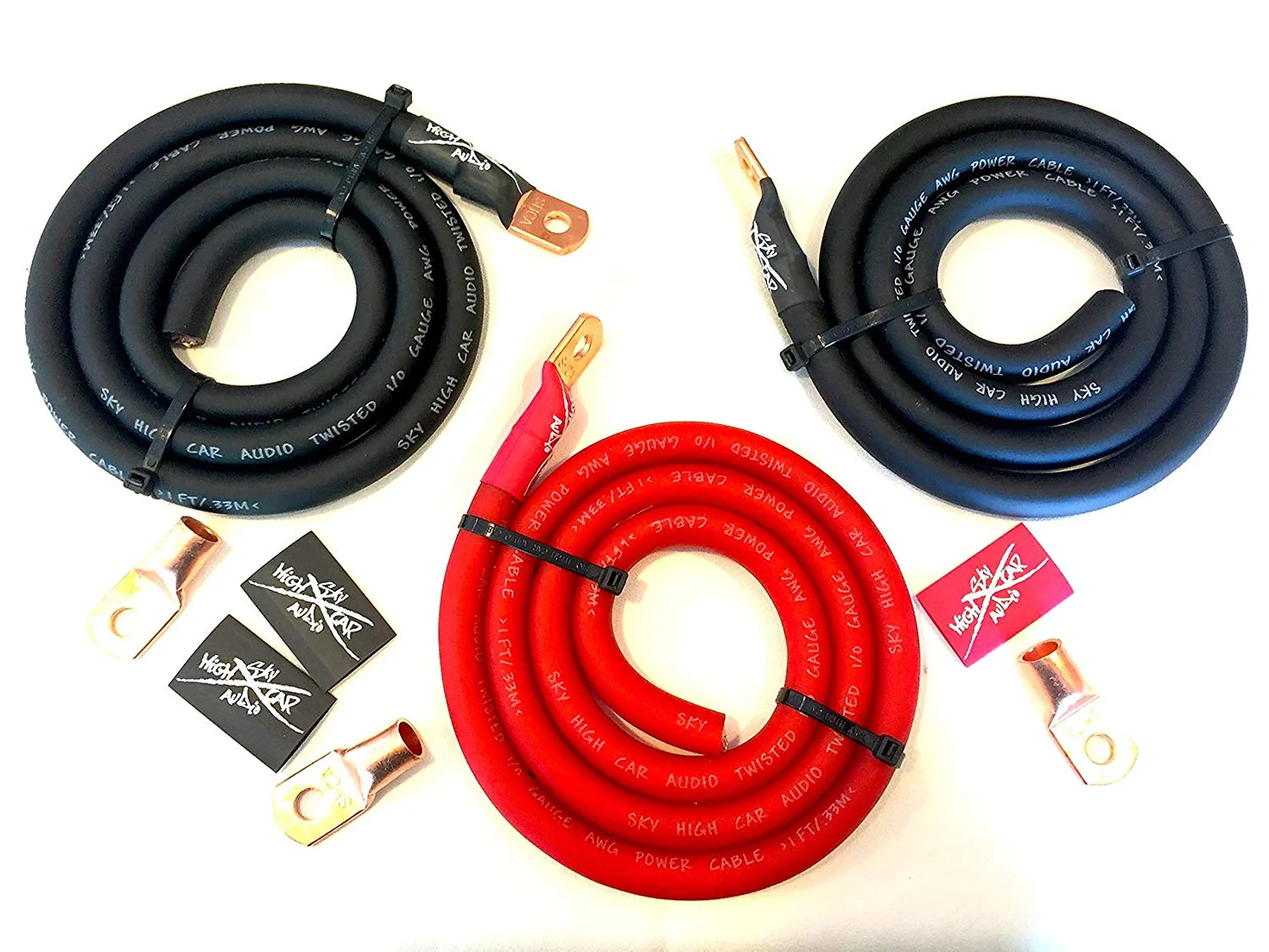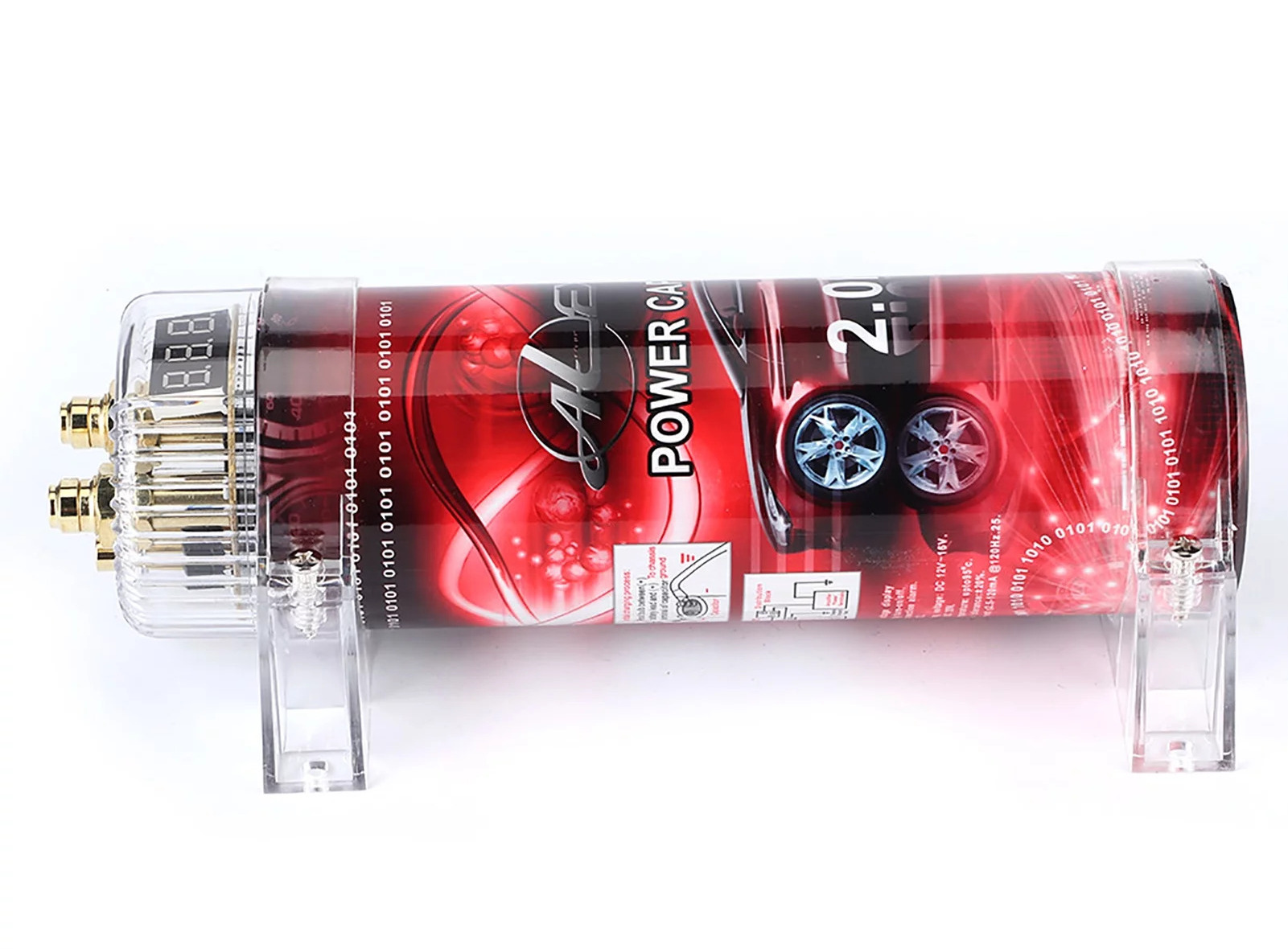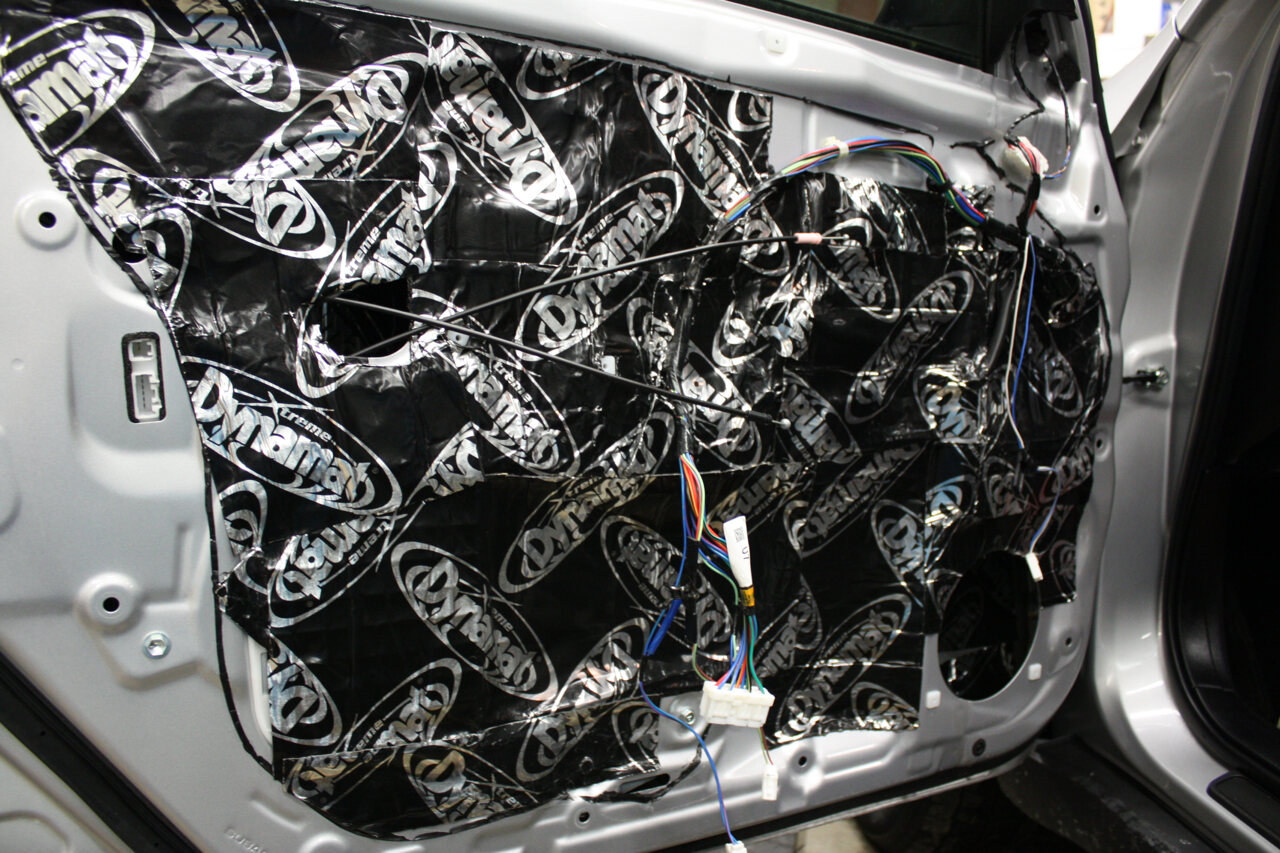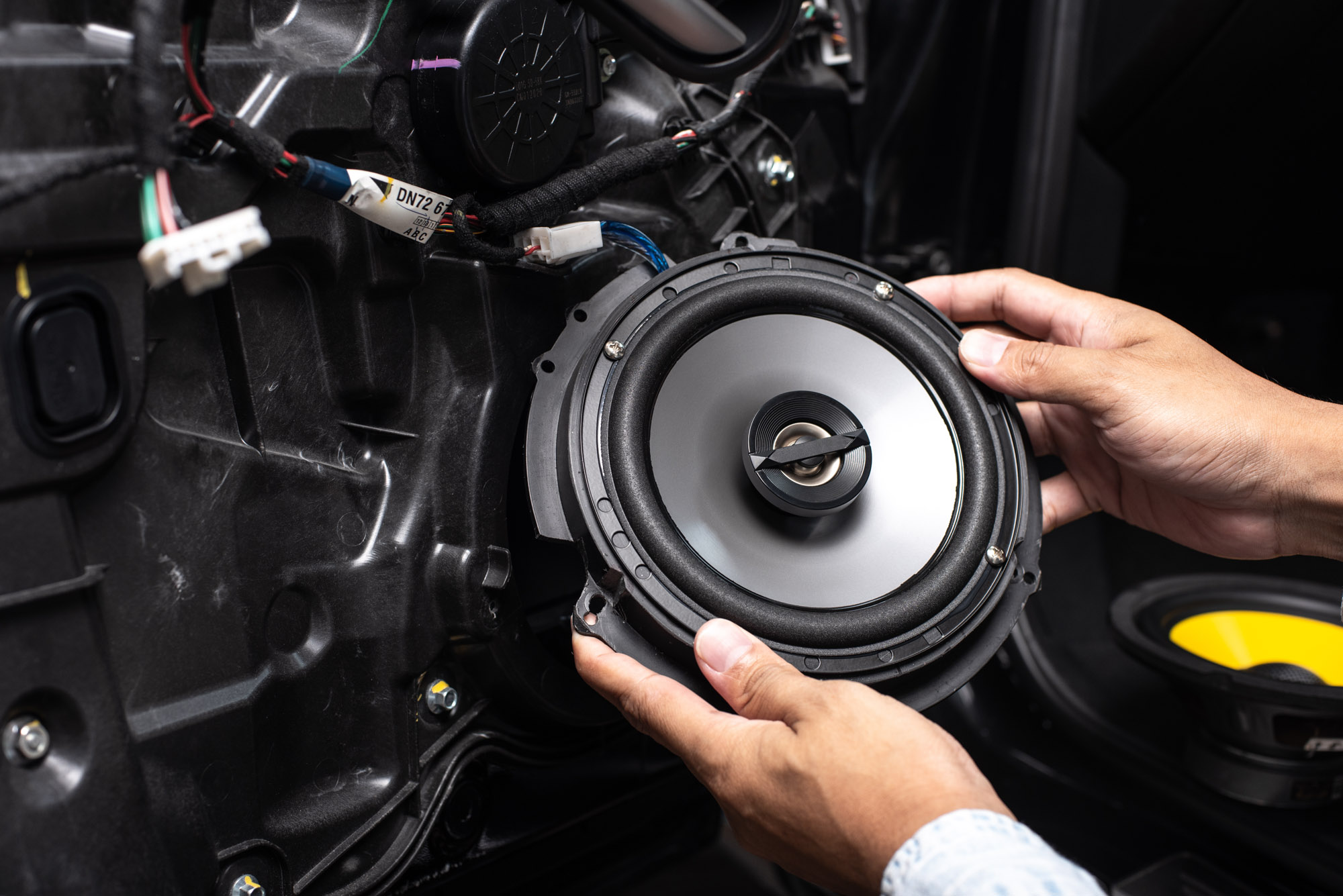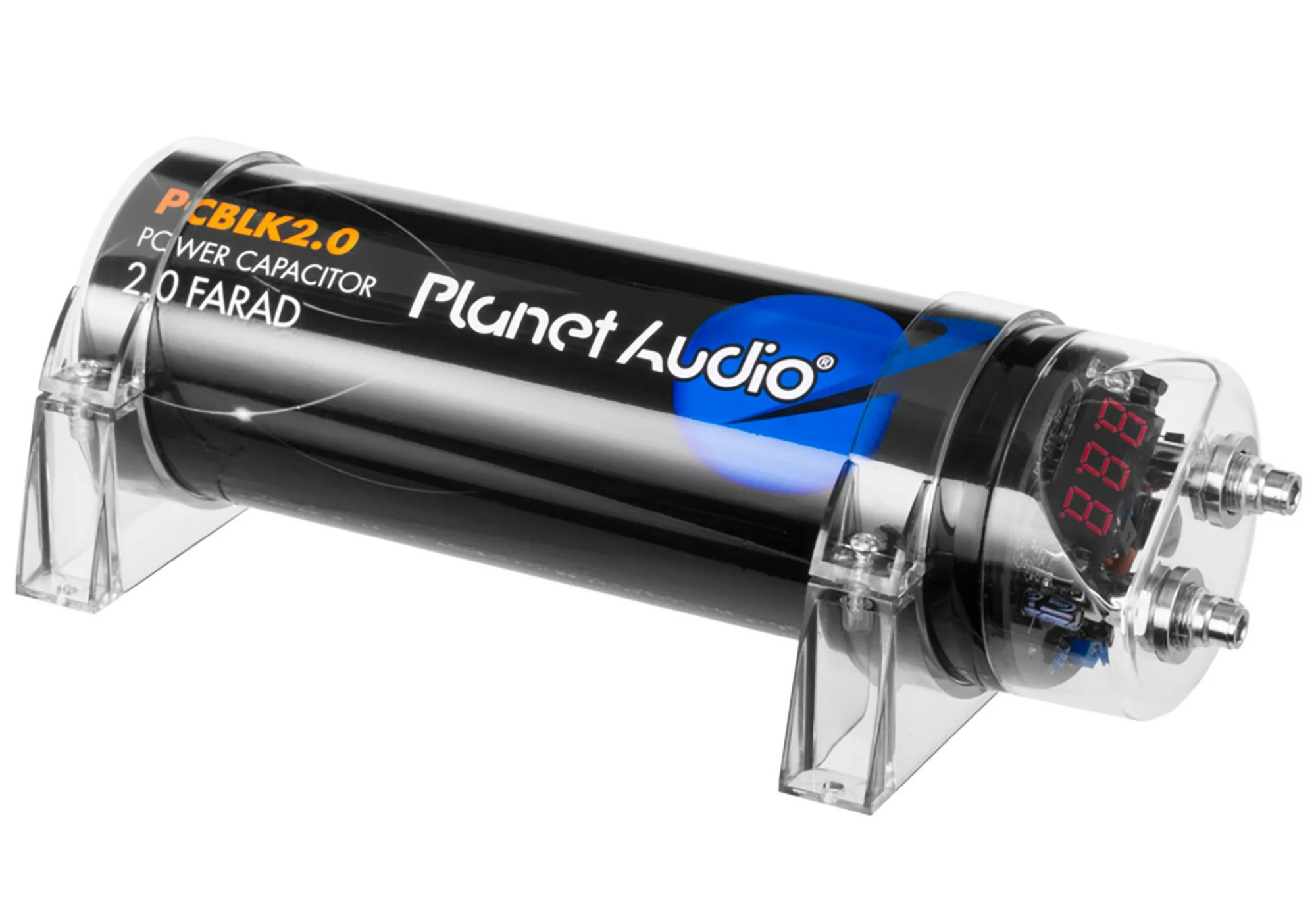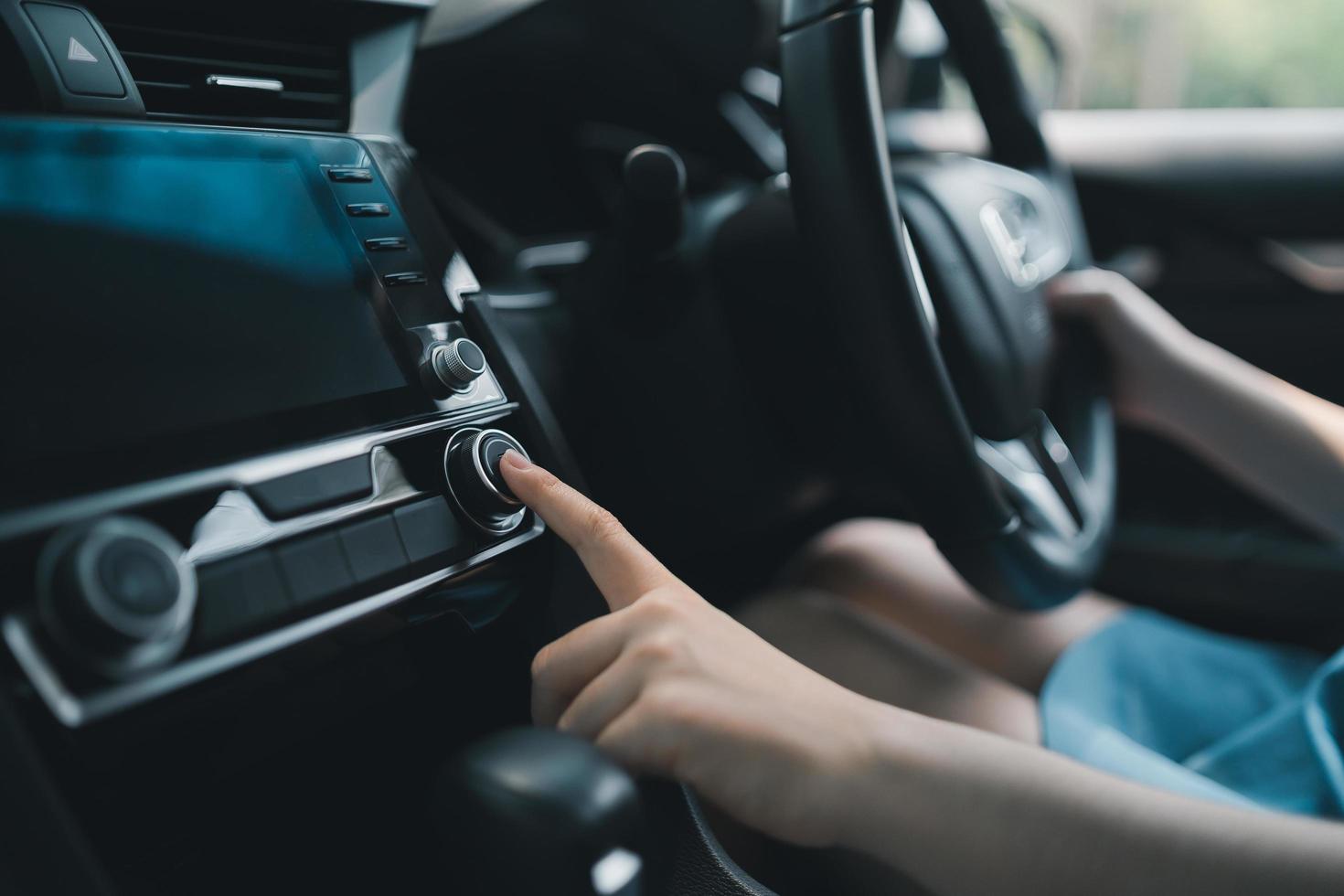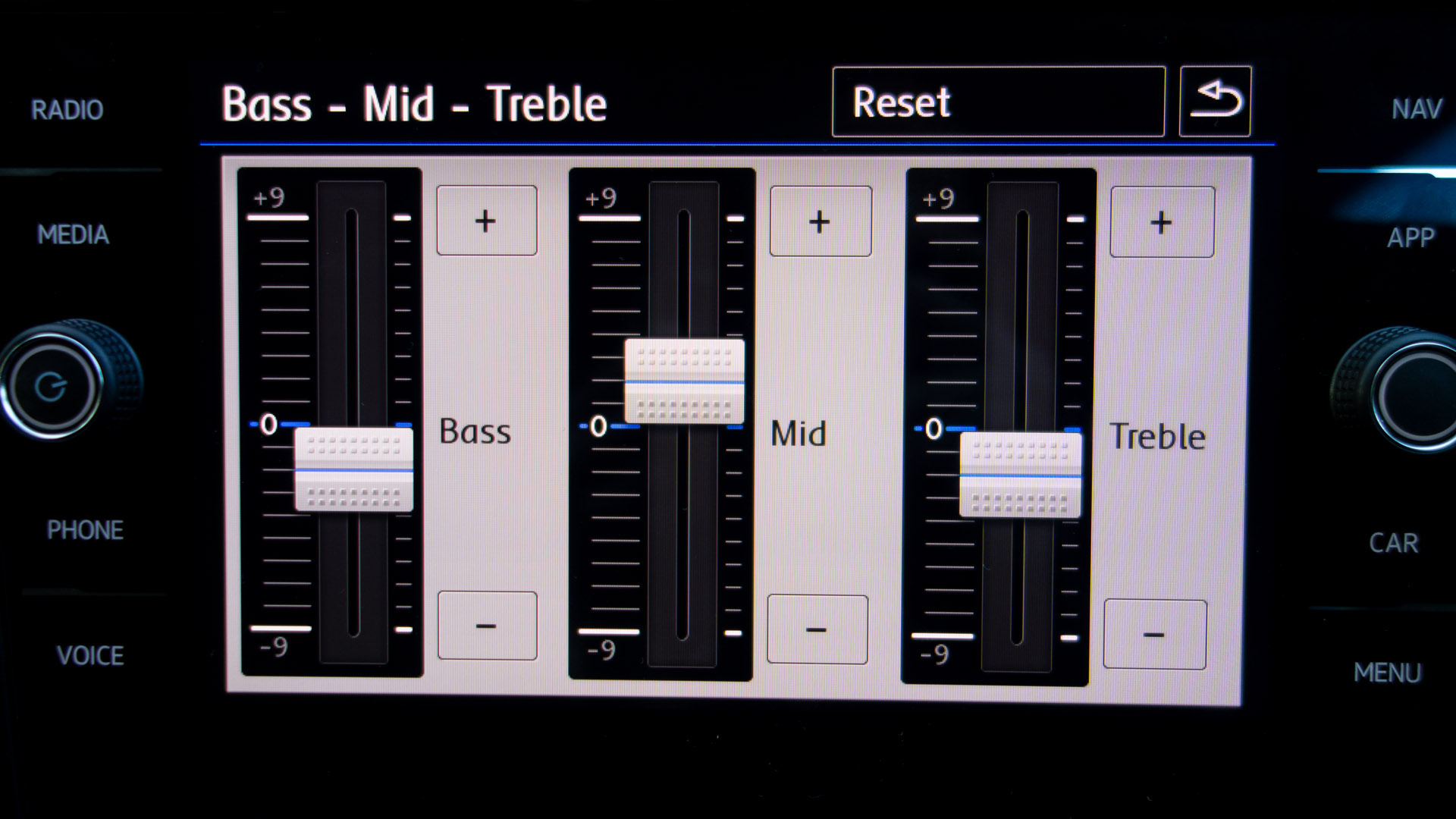Home>Devices & Equipment>Car Audio>What Is ASL In Car Audio
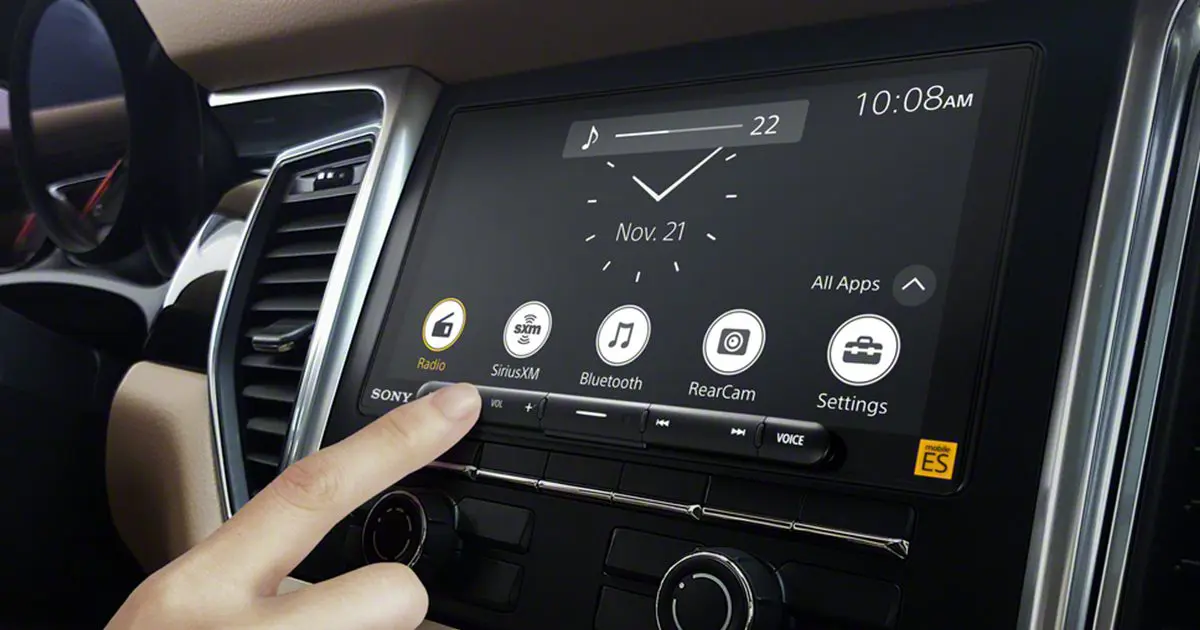

Car Audio
What Is ASL In Car Audio
Published: February 6, 2024
Learn about ASL in car audio systems and how it enhances your listening experience. Discover the latest advancements in car audio technology and find the best options for your vehicle.
(Many of the links in this article redirect to a specific reviewed product. Your purchase of these products through affiliate links helps to generate commission for AudioLover.com, at no extra cost. Learn more)
Table of Contents
- Introduction
- Definition of ASL
- Importance of ASL in Car Audio
- Benefits of ASL
- Application of ASL in Car Audio Systems
- Comparison of ASL with Other Audio Technologies
- Common ASL Features and Specifications
- How to Choose the Right ASL System for Your Car
- Installation Process of ASL in Car Audio Systems
- Troubleshooting ASL in Car Audio Systems
- Conclusion
Introduction
Welcome to the world of car audio, where high-quality sound meets the thrill of the open road. Whether you’re a casual music enthusiast or a passionate audiophile, having a top-notch audio system in your car can greatly enhance your driving experience. From crisp highs to thumping bass, a well-designed car audio setup can make all the difference in the quality of your music.
One key aspect of car audio that often gets overlooked is ASL, or Automatic Sound Levelizer. ASL is a technology that helps to optimize the audio levels in your car, providing a balanced and consistent sound experience regardless of the volume or noise conditions. In this article, we will explore what ASL is, why it is important in car audio, and how it can enhance your overall listening enjoyment.
ASL is a feature that is commonly found in many modern car audio systems. It is designed to automatically adjust the volume levels based on the ambient noise within the car. This ensures that the audio is always clear and audible, even in noisy environments. Additionally, ASL helps to prevent sudden volume changes when switching between sources or tracks, providing a seamless and enjoyable listening experience.
The importance of ASL in car audio cannot be overstated. Have you ever been driving on the highway and had to constantly adjust the volume of your music to compensate for the increasing road noise? Or maybe you’ve had to turn down the audio suddenly when a particularly loud song comes on? These are common problems that ASL can solve.
With ASL, you can say goodbye to constantly adjusting the volume knob and focus on enjoying your music or audio content. ASL takes care of the volume control for you, adapting to the changing noise conditions and ensuring that the audio remains at a consistent level.
Furthermore, ASL plays a crucial role in maintaining the integrity of the audio signal. By automatically adjusting the volume levels, ASL helps prevent distortion or clipping that can occur when the audio signal is pushed too hard. This ensures that you are always getting the best possible sound quality from your car audio system.
In the next sections, we will delve deeper into the benefits of ASL, its application in car audio systems, how it compares to other audio technologies, and more. So, buckle up and get ready to explore the world of ASL in car audio!
Definition of ASL
ASL, or Automatic Sound Levelizer, is a technology that is commonly found in car audio systems. It is designed to automatically adjust the volume levels based on the ambient noise within the car. ASL ensures a consistent and balanced sound experience, regardless of the volume setting or the surrounding noise conditions.
The primary function of ASL is to provide a seamless listening experience by automatically adjusting the volume levels to compensate for changes in ambient noise. This means that even if you’re driving on a busy highway or in a noisy urban environment, ASL will adapt to the surrounding noise levels and keep the audio at an optimal volume.
ASL operates by using a combination of microphones and sophisticated audio processing algorithms. The microphones pick up the ambient noise levels in the car, while the algorithms analyze this data and make real-time adjustments to the volume levels. The result is a balanced and consistent audio experience, where the music or audio content remains clear and audible, regardless of the external noise.
It’s worth noting that ASL is not just limited to adjusting the overall volume levels. It can also dynamically control the balance between the different audio channels, ensuring that the sound is evenly distributed across the speakers. This helps to create a more immersive and enjoyable listening experience, where you can hear every detail of the music or audio content.
ASL is typically found as a built-in feature in car audio systems, although it may have different names depending on the manufacturer. Some common names for ASL include “Volume Leveling,” “Auto Volume Control,” or “Dynamic Volume Control.” Regardless of its name, the purpose of ASL remains the same – to provide a consistent and optimized sound experience in the car.
Now that we have a clear definition of ASL, let’s explore why it is important in car audio and the benefits it brings to the table.
Importance of ASL in Car Audio
ASL, or Automatic Sound Levelizer, plays a crucial role in enhancing the overall audio experience in car audio systems. Its importance stems from several key factors that greatly improve the convenience, comfort, and quality of listening in a vehicle.
One of the primary reasons why ASL is important in car audio is its ability to maintain a consistent volume level regardless of external noise conditions. When driving, the sound within the vehicle can vary significantly due to factors such as traffic noise, wind noise, or the smoothness of the road surface. These external factors can make it challenging to enjoy music or audio content at a consistent volume.
With the help of ASL, this issue is effectively addressed. ASL uses microphones and advanced audio processing algorithms to continuously monitor the ambient noise levels inside the car. It then dynamically adjusts the volume levels to compensate for any changes. This ensures that the audio remains audible and clear, even in noisy environments, allowing for an uninterrupted listening experience.
Another notable importance of ASL lies in its ability to prevent sudden volume changes. In traditional car audio systems, switching between different sources, such as radio, CD, or Bluetooth, can result in significant disparities in volume levels. These unexpected volume shifts can be jarring and disruptive to the listening experience.
ASL mitigates this issue by automatically equalizing the volume levels across different audio sources. It carefully balances the sound output, ensuring a smooth and seamless transition between various inputs. This not only enhances the overall listening experience but also provides convenience and peace of mind to the user.
Furthermore, ASL helps to optimize the audio quality in car audio systems. By continuously adjusting the volume levels and dynamically controlling the balance between channels, ASL ensures that the audio is reproduced faithfully and accurately. This means that you can enjoy your favorite music, podcasts, or audiobooks with improved clarity, detail, and richness.
The importance of ASL becomes even more evident during long drives or road trips. With ASL, you can relax and enjoy your favorite tunes without constantly adjusting the volume or dealing with sudden spikes in volume due to changes in external noise conditions. This contributes to a more comfortable and enjoyable driving experience for both the driver and passengers.
In summary, ASL plays a vital role in car audio by maintaining a consistent volume level, preventing sudden volume changes, and optimizing the audio quality. It enhances convenience, comfort, and overall enjoyment when listening to music or audio content on the road.
Benefits of ASL
ASL, or Automatic Sound Levelizer, offers several compelling benefits that greatly enhance the car audio experience. By automatically adjusting volume levels and optimizing sound quality, ASL provides convenience, comfort, and improved audio enjoyment. Let’s explore some of the key benefits of ASL in more detail.
1. Consistent Volume Levels: One of the primary benefits of ASL is its ability to maintain a consistent volume level regardless of external noise. Whether you’re driving on a busy highway or in a noisy urban environment, ASL continuously monitors the ambient noise levels and adjusts the volume accordingly, ensuring that the audio remains audible and clear at all times.
2. Smooth Audio Transitions: ASL eliminates sudden volume changes when switching between different audio sources or tracks. By dynamically equalizing the volume levels, ASL ensures a seamless and uninterrupted listening experience. You can switch between radio stations, CDs, or Bluetooth audio without being taken aback by jarring volume shifts.
3. Enhanced Audio Quality: With ASL, the audio quality in your car audio system is optimized. ASL dynamically adjusts the volume levels and balances the audio channels, ensuring that music and audio content are reproduced with clarity, detail, and accuracy. This results in a more immersive and enjoyable listening experience.
4. Convenience and Ease of Use: ASL provides convenience and peace of mind by taking care of volume control for you. Instead of constantly adjusting the volume knob to compensate for changes in noise conditions, ASL automatically adapts to the surrounding environment, allowing you to focus on the road and enjoy your music or audio content hassle-free.
5. Driver and Passenger Comfort: Driving can be inherently noisy, especially on highways or in crowded areas. ASL helps create a more comfortable and pleasant driving experience by ensuring that the audio remains audible and balanced, even in challenging noise conditions. This contributes to reduced driver fatigue and provides a more enjoyable journey for all passengers.
6. Protects Audio System and Speakers: ASL helps prevent distortion or clipping that can occur when the audio signal is pushed too hard. By automatically adjusting the volume levels, ASL ensures that the audio system and speakers are not strained, thus prolonging their lifespan and maintaining optimal performance.
7. Customizable Settings: Many ASL systems allow for customizable settings, allowing you to tailor the audio experience to your preferences. You can adjust parameters such as sensitivity, response time, or the target volume level, giving you greater control over how ASL functions in your car audio setup.
Overall, ASL offers valuable benefits such as consistent volume levels, smooth audio transitions, enhanced audio quality, convenience, driver and passenger comfort, protection for the audio system, and customizable settings. These benefits combine to deliver a superior and optimized car audio experience.
Application of ASL in Car Audio Systems
ASL, or Automatic Sound Levelizer, is a widely used feature in car audio systems that provides numerous applications to enhance the audio experience. Let’s explore some of the key applications of ASL in car audio systems.
1. Noise Compensation: One of the primary applications of ASL is to compensate for noise variations within the car. ASL uses microphones strategically placed in the vehicle to measure the ambient noise levels. It then adjusts the volume levels to maintain an optimal listening experience regardless of external noise, such as road noise or air conditioning system noise.
2. Dynamic Volume Control: ASL dynamically adjusts the volume levels to ensure a consistent audio experience. It normalizes volume discrepancies between different sources or tracks, preventing sudden changes in volume that can be disruptive or inconvenient. This application of ASL ensures a seamless and enjoyable listening experience for the driver and passengers.
3. Equalization of Sound Distribution: ASL helps to balance the sound distribution within the car. It takes into account the speaker placement and the acoustic properties of the vehicle to optimize the audio output across all speakers. This application ensures that the sound is evenly distributed, creating a more immersive and enveloping audio experience.
4. Adaptation to External Noise Conditions: ASL adjusts the volume levels according to the changing noise conditions outside the car. This is particularly beneficial when driving in different environments, such as a quiet suburban area or a busy city center. ASL ensures that the audio remains audible and clear, adapting to the external noise without the need for constant manual adjustments.
5. Prevention of Distortion: ASL plays a crucial role in preventing audio distortion that can occur when the volume levels are too high or the audio signal is pushed beyond its limits. By automatically adjusting the volume levels, ASL ensures that the audio system operates within its optimum range, avoiding distortion and maintaining high-quality sound reproduction.
6. Enhancement of Safety: ASL contributes to driver safety by eliminating the need for constant manual volume adjustments. With ASL, drivers can keep their hands on the wheel and their focus on the road, minimizing distractions and improving overall safety during the driving experience.
7. Integration with Other Audio Technologies: ASL can be integrated with other audio technologies to enhance the overall audio performance in car audio systems. It can work in conjunction with features like equalizers, surround sound processing, or advanced audio codecs, providing a comprehensive audio solution that delivers optimal sound quality and user experience.
The applications of ASL in car audio systems demonstrate its versatility and usefulness. From compensating for external noise to maintaining consistent volume levels and preventing audio distortion, ASL significantly enhances the audio experience, ensuring a pleasurable and immersive environment for both drivers and passengers.
Comparison of ASL with Other Audio Technologies
When it comes to enhancing the audio experience in car audio systems, there are several technologies available. While ASL, or Automatic Sound Levelizer, is a popular feature, it’s important to understand how it compares to other audio technologies. Let’s explore a comparison between ASL and some other commonly used audio technologies.
1. Equalizers: Equalizers adjust the frequency response of the audio signal, allowing users to boost or cut specific frequency ranges. While equalizers provide control over the tonal balance of the audio, they do not address volume leveling or compensate for noise variations like ASL does. ASL focuses on maintaining a consistent volume level in various noise conditions, making it a valuable addition alongside an equalizer.
2. Noise Cancellation: Noise cancellation systems use advanced algorithms and microphones to actively reduce or eliminate external noise. They excel at reducing low-frequency noise, such as engine or road noise, creating a quieter environment for audio playback. However, noise cancellation systems primarily target external noise, whereas ASL adjusts the volume levels to compensate for both external and internal noise variations.
3. Dynamic Range Compression (DRC): DRC technology compresses the dynamic range of the audio signal by reducing the volume of louder elements and boosting the volume of softer elements. This can improve audibility, particularly in environments with high background noise. However, DRC does not provide the same level of automatic adjustment as ASL. ASL continuously adapts to changing noise conditions to maintain a consistent audio experience, while DRC primarily focuses on compressing the audio dynamics to prevent clipping or distortion.
4. Surround Sound Processing: Surround sound processing technologies, such as Dolby Atmos or DTS:X, create a more immersive audio experience by virtualizing surround sound using multiple audio channels. These technologies enhance spatial audio positioning, making the sound appear to come from different directions. ASL, on the other hand, is primarily concerned with volume leveling and noise compensation, and it can be utilized alongside surround sound processing to ensure a consistent audio experience at any volume level.
5. Active Noise Control (ANC): ANC systems actively generate sound waves to cancel out external noise, particularly low-frequency noise. They use microphones to pick up ambient noise and create an anti-noise signal to counteract it. While ANC can significantly reduce external noise, it is focused on noise cancellation rather than volume leveling or internal noise compensation, which are core functions of ASL.
It’s important to note that in many car audio systems, these technologies can be used together to enhance the overall audio experience. For example, ASL can work alongside equalizers, surround sound processing, noise cancellation, and other technologies to provide a comprehensive audio solution that addresses volume leveling, noise compensation, tonal balance, and immersive spatial audio.
In summary, while other audio technologies like equalizers, noise cancellation, DRC, surround sound processing, and ANC have their specific functions, ASL stands out with its primary focus on volume leveling, noise compensation, and maintaining a consistent audio experience. ASL complements these other technologies, ensuring that the audio remains clear, balanced, and enjoyable regardless of the noise conditions within the car environment.
Common ASL Features and Specifications
ASL, or Automatic Sound Levelizer, is a feature found in many car audio systems. While the specific implementation and functionalities may vary across different manufacturers and models, there are some common features and specifications associated with ASL. Let’s explore some of them:
1. Microphone Array: ASL utilizes a microphone array strategically placed within the car to capture the ambient noise. The number and placement of microphones may vary, but the purpose remains the same – to gather accurate and real-time information about the noise levels inside the vehicle.
2. Real-time Audio Processing: ASL employs sophisticated real-time audio processing algorithms to analyze the data captured by the microphones. These algorithms analyze the noise characteristics and dynamically adjust the volume levels accordingly, ensuring a consistent and balanced audio experience.
3. Sensitivity Adjustment: Some ASL systems allow users to adjust the sensitivity of the microphone array. This feature allows users to fine-tune how sensitive the ASL system is to external noise conditions. Users can customize the ASL sensitivity based on their preferences or specific driving situations.
4. Response Time: ASL systems have a response time, which is the speed at which the system adapts to changes in noise conditions. A faster response time allows for more immediate adjustments to the volume levels, providing a seamless listening experience even during rapid changes in noise levels.
5. Target Volume Control: Many ASL systems offer a feature that allows users to set a target volume level. This means that users can specify the desired volume they want the ASL system to maintain. This feature ensures that the system adjusts the volume levels to the specific preference of the user.
6. Integration with Other Audio Settings: ASL can often be customized and integrated with other audio settings in the car audio system. This integration allows users to tailor their listening experience by combining ASL with equalizers, balance controls, fade controls, and other audio settings, creating a personalized and optimized audio environment.
7. Compatibility and Connectivity: ASL systems may be compatible with various audio sources and interfaces such as AM/FM radio, CDs, USB drives, Bluetooth, and auxiliary inputs. This ensures that ASL can be utilized with different media devices and allows for seamless integration with various audio sources.
8. User-Friendly Interface: ASL systems typically have a user-friendly interface that allows for easy control and adjustment of settings. This can include dedicated buttons or menus within the car audio system that provide quick access to ASL-related functions and settings.
These are some of the common features and specifications that you can expect from an ASL system in a car audio setup. However, it’s important to note that the specific features and functionalities of ASL may vary depending on the manufacturer and the model of the car audio system.
When choosing a car audio system with ASL, consider your specific needs and preferences, and ensure that the features and specifications of the ASL system align with your requirements. This will help you enjoy a consistently balanced and optimized audio experience in your car.
How to Choose the Right ASL System for Your Car
When it comes to selecting the right ASL, or Automatic Sound Levelizer, system for your car audio setup, there are several factors to consider. The right ASL system can greatly enhance your audio experience, providing a consistent and balanced sound regardless of the driving conditions. Here are some key points to keep in mind when choosing the right ASL system for your car:
1. Compatibility with Your Car: Consider the compatibility of the ASL system with your car’s existing audio setup. Ensure that the ASL system is compatible with the audio sources you commonly use, such as AM/FM radio, CDs, USB drives, Bluetooth, or auxiliary inputs. Check if the ASL system integrates seamlessly with your car’s audio controls and interfaces.
2. Brand Reputation: Research the reputation and reliability of the brand offering the ASL system. Look for well-established brands with a track record of producing high-quality audio products. Read customer reviews and consider recommendations from car audio enthusiasts to gauge the overall satisfaction and performance of the ASL systems offered by different brands.
3. Features and Functionality: Take note of the specific features and functionality offered by the ASL system. Look for features such as microphone sensitivity adjustment, response time customization, target volume control, or integration with other audio settings. Consider which features are essential to your audio preferences and driving needs.
4. User-Friendliness: Evaluate the user-friendliness of the ASL system. Consider the ease of control and adjustment of settings, as well as the visibility and accessibility of the ASL interface within your car’s audio system. A user-friendly ASL system will make it easier for you to customize and enjoy the audio experience in your car.
5. Customization Options: Check if the ASL system offers customization options to suit your personal preferences. Look for systems that allow you to adjust the sensitivity, response time, or target volume levels according to your specific requirements. Flexibility in customization can enhance your overall audio experience and satisfaction.
6. Price and Value: Consider the price range of the ASL systems available in the market and compare them based on the features and functionality they offer. Determine the value proposition by assessing the benefits you will derive from the ASL system in relation to the price. It’s important to find a balance between your budget and the desired performance of the ASL system.
7. Professional Installation: If you’re not familiar with car audio installations, consider professional installation services to ensure the ASL system is integrated properly into your car. Professional installers have the expertise and knowledge to wire the ASL system correctly, optimizing its performance and compatibility with your car’s audio setup.
By considering these key factors, you can make an informed decision when choosing the right ASL system for your car. Take the time to research and evaluate different options to find the ASL system that best meets your audio needs and enhances your driving and listening experience.
Installation Process of ASL in Car Audio Systems
Installing an ASL, or Automatic Sound Levelizer, system in a car audio setup requires attention to detail and proper wiring to ensure optimal performance. While the exact installation process may vary depending on the specific ASL system and the car’s audio configuration, here are some general steps to guide you through the installation process:
- Read the Manual: Begin by thoroughly reading the instruction manual provided with the ASL system. Familiarize yourself with the specific requirements and guidelines outlined by the manufacturer.
- Gather the Necessary Tools: Before starting the installation, ensure that you have all the necessary tools and equipment. This may include wire strippers, crimping tools, electrical tape, wire connectors, and a multimeter for testing electrical connections.
- Select the Mounting Location: Choose a suitable mounting location for the ASL system. Consider factors such as accessibility, visibility, and compatibility with your car’s audio controls. Common mounting locations include the dashboard, center console, or a designated compartment in the car.
It’s important to note that this installation guide provides a general overview, and the specifics may vary depending on the ASL system and your car’s audio setup. If you are unsure about any part of the installation process, it is recommended to seek professional assistance from a car audio installer or technician.
By following the proper installation process, you can enjoy the benefits of an ASL system in your car audio setup, ensuring a consistent and optimized audio experience while on the road.
Troubleshooting ASL in Car Audio Systems
While ASL, or Automatic Sound Levelizer, systems in car audio setups are designed to provide a seamless and optimized audio experience, there may be instances where troubleshooting is necessary to resolve any issues. Here are some common troubleshooting steps to help you address ASL-related problems:
- Check Power Connection: Verify that the ASL system is properly connected to a reliable power source. Ensure that the power wires are securely connected and that there are no loose connections or wire damage.
- Inspect Ground Connection: Confirm that the ASL system has a solid ground connection to the car’s chassis. A weak or faulty ground connection can lead to issues with the ASL functionality.
- Confirm Audio Connections: Check all audio connections between the ASL system and your car’s audio setup. Make sure that the audio input and output wires are properly connected, without any loose connections or damage to the cables.
- Reset the ASL System: Some ASL systems have a reset function that can help resolve issues. Consult the ASL system’s user manual to see if the system can be reset, and follow the instructions provided.
- Adjust ASL Settings: If the ASL system has customizable settings, experiment with adjusting the sensitivity, response time, or target volume to see if it resolves the issue. Sometimes minor tweaks to these settings can improve the ASL functionality.
- Check for Interference: RF interference from other electronic devices in the car can potentially affect the performance of the ASL system. If you suspect interference, try repositioning any electronic devices or reducing their proximity to the ASL system.
- Update or Upgrade Firmware: If your ASL system has firmware that can be updated, check if there are any available updates from the manufacturer. Updating the firmware can help resolve any software-related issues and improve the overall performance of the ASL system.
- Consult Technical Support: If you have tried the troubleshooting steps above and the ASL system continues to experience issues, contact the manufacturer’s technical support or consult a car audio professional. They can provide further guidance and assistance in diagnosing and resolving any complex problems.
It’s important to note that troubleshooting steps may vary depending on the specific ASL system and the car’s audio setup. Always refer to the user manual and follow the manufacturer’s instructions for troubleshooting and resolving any ASL-related issues.
By following these troubleshooting steps, you can effectively address any ASL-related problems and ensure that your car audio system delivers the consistent and optimized audio experience that ASL is designed to provide.
Conclusion
ASL, or Automatic Sound Levelizer, is a valuable technology in car audio systems that enhances the overall audio experience. With its ability to maintain consistent volume levels, adapt to changing noise conditions, and optimize audio quality, ASL provides convenience, comfort, and improved listening enjoyment for drivers and passengers.
In this article, we have explored the definition and importance of ASL in car audio, highlighting its ability to compensate for noise variations, prevent sudden volume changes, and enhance audio quality. We have also compared ASL with other audio technologies, recognizing its unique focus on volume leveling and noise compensation.
Additionally, we discussed the common features and specifications of ASL systems, emphasizing factors such as microphone array placement, real-time audio processing, sensitivity adjustment, and customization options. We also provided guidance on how to choose the right ASL system for your car, considering factors such as compatibility, brand reputation, user-friendliness, and customization options.
The installation process of ASL systems was outlined, highlighting the importance of following the manufacturer’s instructions, proper wiring, and professional installation if necessary. We also offered troubleshooting tips to address ASL-related issues, such as checking power and audio connections, adjusting settings, and consulting technical support when needed.
In conclusion, ASL is a valuable addition to car audio systems, providing a consistent and optimized audio experience. Its ability to maintain volume levels, compensate for noise variations, and enhance audio quality ensures convenience, comfort, and improved audio enjoyment. By understanding the features, choosing the right system, and following proper installation and troubleshooting steps, you can maximize the benefits of ASL in your car audio setup, immersing yourself in the joy of high-quality sound while on the road.

